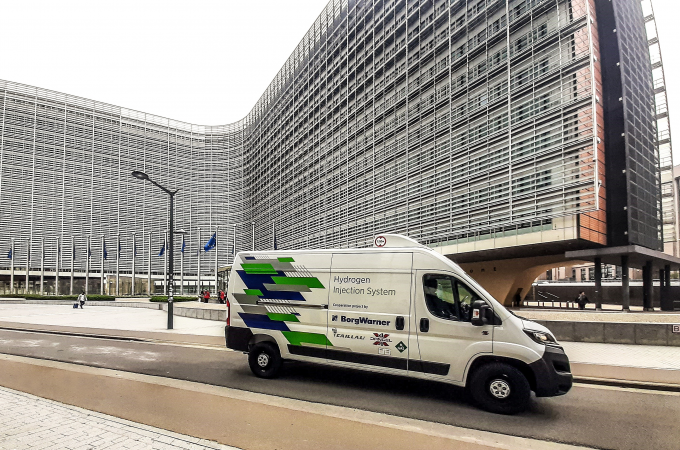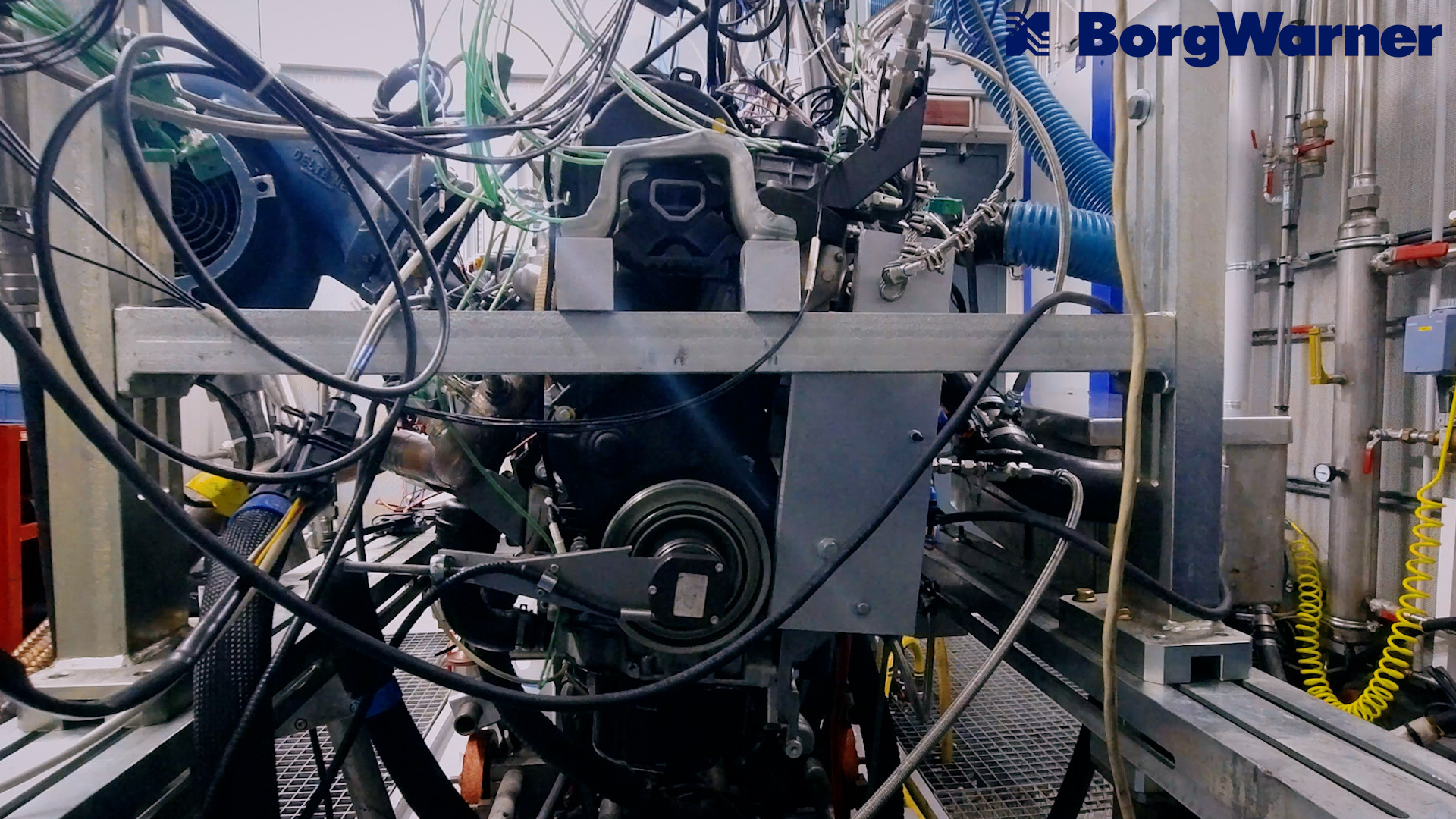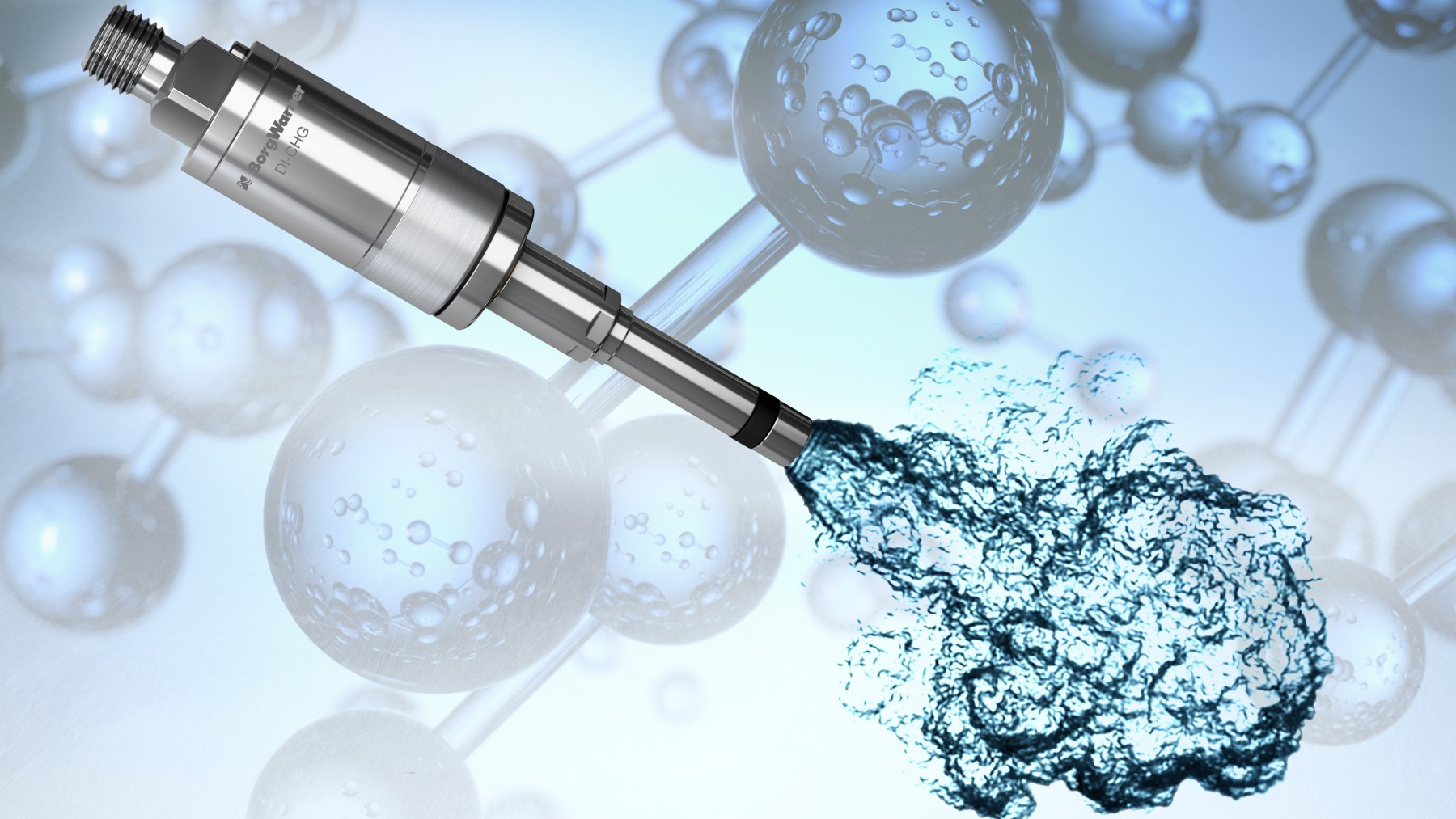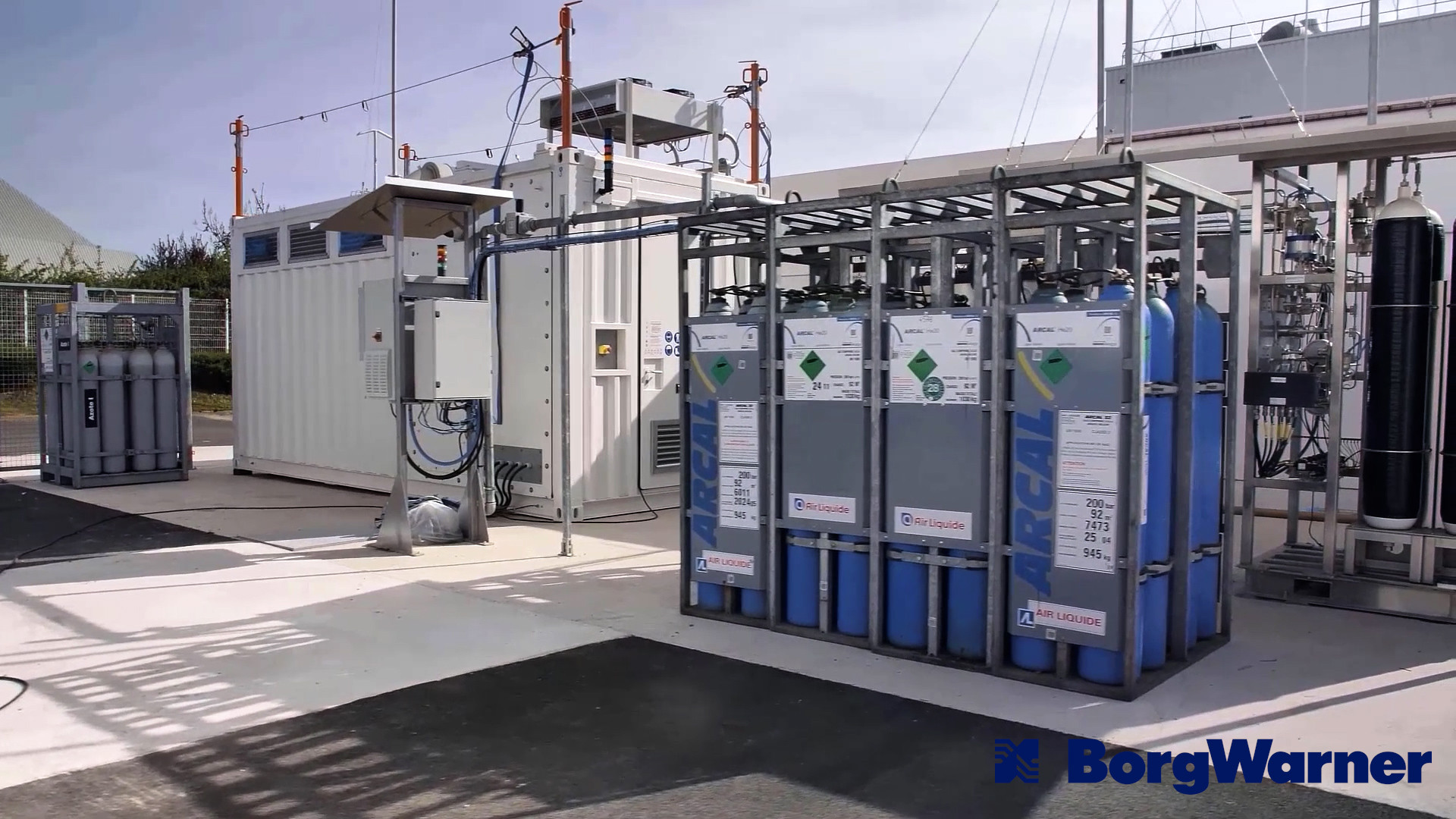BorgWarner displays hydrogen-powered ICE van at Cenex
By Jim Gibbins - 31st October 2022

BorgWarner H2Van in Brussels
UK / France – A European division of component systems giant, BorgWarner Inc of Auburn Hills, Michigan, USA used Cenex 2022, an advanced mobility and technology event held at Millbrook, UK in September to exhibit its hydrogen combustion powered demonstrator van, called H2ICE.
The H2ICE demonstrator vehicle, a Peugeot Boxer 3.5t gvw van, had been retrofitted with hydrogen tanks and the diesel engine modified to include its hydrogen direct fuel injection system and the turbocharger updated. The demonstration vehicle, when taken out on the test track, offered the same performance characteristics of its diesel powered counterpart.
In a post-show interview with Jean Luc Beduneau, Engineering Director of the BorgWarner Centre for Innovation & Engineering Excellence (CIEE) in Blois, France, with Truck & Bus Builder, he said the vehicle was the result of hydrogen internal combustion engine exploration projects, first initiated in 2019 through collaboration with several universities.
-in-Blois,-France.JPG)
Jean Luc Beduneau, Engineering Director, BorgWarner Centre for Innovation & Engineering Excellence (CIEE) in Blois, France.
Origins of the BorgWarner H2ICE project
Beduneau, who is well suited to managing the hydrogen engine development project for BorgWarner, having undertaken his PhD in hydrogen / oxygen combustion, explained how BorgWarner arrived at the H2ICE demonstrator stage. The CIEE, he said was ideally suited for this development as its primary focus is on injectors for the light commercial vehicle segment and that it is also sited next to one of the company’s European injector factories.
He said the H2ICE project was started following an internal decision by BorgWarner to undertake conversion of a diesel engine to hydrogen. Beduneau said BorgWarner has the knowledge and competencies to undertake a full engine conversion to hydrogen with the main challenges being combining some of the mechanical and software technologies associated with fuel injection, air management and turbocharging of a diesel engine with some of the spark ignition technologies of gasoline and gas engines – with hydrogen also being a spark ignition fuel.
In 2019, he said the project had started with visualisation and development of the hydrogen injector system using a single cylinder initially followed by multi-cylinder trials, and then in 2020, some customers started to request more advanced development of the engine. This then led to the decision to undertake a full conversion of a diesel engine, as it would not only help to promote the technology, but it would also help BorgWarner to understand what was needed to go to market and for series production.

BorgWarner H2 Engine Test Bench in Blois, France
As the project has developed there has been an increasing number of enquiries from OEMs, said Beduneau; in fact, BorgWarner now has its first series hydrogen project for an off-highway application. These enquires from OEMs for development of an H2ICE started in Europe and they have now accelerated in China and the USA. In Europe, Beduneau explained, OEMs have begun seeing the potential opportunity for hydrogen ICEs because of the relatively low cost of retraining personnel in how to build and maintain them, but also, as a way of keeping certain internal combustion engine plants (and transmission plants) open and to maintaining employment in those areas. In China and the USA, there are strong financial incentives by respective governments for hydrogen powered (HFCs predominantly) vehicles, which is helping to establish an H2 fuelling infrastructure.
Whereas the H2ICE is not completely zero emissions, said Beduneau, it is remarkably close; as currently, diesel LCVs must operate at or below 147 grams of CO2 per kilometre (147g/km), the hydrogen engine is shown to emit less than 1 gram of CO2 per kilometre. While there will be CO2 limits set to which an H2 engine must comply, historically regulations have always allowed a tolerance of carbon limits and have to date not asked for zero, stated Beduneau.
Transferable diesel and gasoline technologies for the H2ICE
Beduneau said there are fundamentally three core technologies that have been developed with the advancement of the diesel, gas and petrol engines that are now facilitating the successful development of the hydrogen engine, these are the advancements in turbocharger technologies, in SCR (Selective Catalytic Reduction) aftertreatment systems and direct injection systems.
The advancements in air management and turbocharger technologies in diesel engines is important in hydrogen engines because they need to be run very lean and to achieve this, a high volume of air is required to lower the temperature to avoid production of too much NOx. Advancement in turbocharging technologies in the diesel engine has provided the tools for development of the hydrogen engine.
However, Beduneau warned, under load or during transient cycles, NOx increases, this can now be controlled or managed using advanced SCR (Selective Catalytic Reduction) exhaust aftertreatment systems.
Thirdly, direct injection, enables almost the same power density with hydrogen as to that of diesel. This is important as it allows for use of the same engine size in the vehicle.

BorgWarner hydrogen fuel direct injector
Bringing the H2ICE to market
Hydrogen is not new in industry – it is a well-known gas and there is knowledge on hydrogen distribution and managing hydrogen pipelines. In California, for example, there are several thousand fuel cell vehicles, which are being refuelled daily with hydrogen, stated Beduneau. So, hydrogen refuelling technology exists, and refuelling of the hydrogen ICE can be managed in the same way as the HFC vehicle.
The refuelling method and time taken to refuel of the hydrogen engine is like that of a diesel engine. User acceptance of hydrogen as a vehicle fuel and the use of grey hydrogen, remain key challenges, but there has been no major disaster to date with using hydrogen as a mobility fuel and there is much investment in many parts of the world to set up green hydrogen production and refuelling centres for fleet operators.
One major challenge remains, regulation. If there is no formal acceptance by authorities of the hydrogen engine, then in a few years it will be too late, stated Beduneau. This is because, the OEMs need to invest in new platforms to accommodate different drivelines and they must make investment decisions as to what these will be and when they will be accepted into the marketplace. At present, he said, OEMs need to look at BEV, HFC and ICE (diesel, gas and hydrogen); if hydrogen ICE is not going to be accepted, it needs to be removed from chassis development and the investment saved and expended on the other options. However, if there is a future for the hydrogen ICE, it needs to be developed now.
Beduneau is clear in his thinking that in the future there will be different solutions for different segments. A small BEV in the city makes a lot of sense, and in a controlled environment, where purity of air is key, fuel cells make sense. Yes, the hydrogen ICE engine has come late to the possible mix of energy solutions, and it’s not 100% clean emissions at the tailpipe, but, if you look at CO2 production in manufacturing BEVs verses ICEs, the former is much higher. Some fossil fuel engines in the future, also makes sense, stated Beduneau.
At present, there appears to be more interest from BorgWarner customers to provide a retrofit or conversion of a diesel engine in a vehicle to hydrogen, than supplying a vehicle with a new hydrogen ICE, said Beduneau. The markets have a general replacement rate of around 5% per year. So, to decarbonise and achieve real operational targets set by government, industry should look at where there are elevated levels of pollution from existing fleets and undertake conversion of those Euro 5 and 6 vehicles to hydrogen, as this would reduce emissions dramatically.
To have a rapid increase in customer demand for hydrogen ICEs, there needs to be clear changes in the regulations permitting hydrogen engines as part of the overall decarbonisation strategy, concluded Beduneau.

BorgWarner Electrolyser in Blois, France

